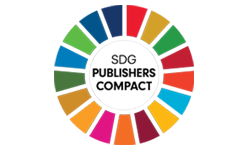Through a stepwise national strategy of importing technology, building indigenous capabilities through learning and assimilating imported technology to exporting the indigenous capabilities, Singapore has successfully caught up with the nations that are advanced in the technologies related to water treatment. From the macro-numerical phenomenon observed, this paper aims to provide both qualitative and quantitative evidences of this co-evolutionary dynamism between innovation and institutional systems. Realising the issue as a comprehensive technology chain and its substitution for traditional resources, sophisticated combination of government stimulation and industry participation leading to a Global Hydrohub has induced world leading-edge innovation involvement. Such a vibrant eco-system aiming at overcoming the constraints for sustainable growth can be applied not only to water management but also to energy and climate change issues. Policy makers in emerging economies can adapt the successful practices and note the pitfalls in establishing the vibrant eco-system that is essential for sustainable environmental solutions for their economies.
Bass, F.M. (1969) ‘A New Product Growth Model for Consumer Durables,’ Management Science, 15:5, 215-227.
Chesbrough, H.W. (2003) ‘The Era of Open Innovation’, Sloan Management Review, 44: 3 (Spring). 35-41.
Chesbrough, H.W. (2003) Open Innovation: The New Imperative for Creating and Profiting from Technology, Boston, Harvard Business School Press.
Chew, M., Watanabe, C. and Tou, Y. (2010) ‘Technology Leapfrogging Findings from Singapore’s Water Industry,’ Journal of Technology Management for Growing Economies, 1: 2, 29-47.
Griliches, Z. (1979) ‘Issues in Assessing the Contribution of R&D to Productivity Growth,’ Bell Journal of Economics, 10:1, 92-116.
Lee, K., and Lim, C. (2001) ‘Technological Regimes, Catching-up and Leapfrogging: Findingsfrom the Korean Industries’, Research Policy, 30:3, 459-483.
Mahajan, V., Muller, E. and Srivastara, R.K. (1990) ‘Determination of Adopter Categories by Using Innovation Diffusion Models,’ Journal of Marketing Research, 27:1, 37-50.
Mazzoleni, R. and Nelson, R. R. (2007) ‘Public Research Institutions and Economic Catch-up’,Research Policy, 36: 10, 1512-1528.
Ministry of Trade and Industry (2006) Science and Technology Plan 2010. The Ministry of Trade and Industry.
Moore, G.A. (1991) Crossing the Chasm: Marketing and Selling Technology Products to Mainstream Customers, Harper Business Essentials, New York, Harper Collins.
Nadiri, M.I. and Schankerman, M. (1981) ‘The Structure of Production, Technological Change, and the Rate of Growth of Total Factor Productivity in U.S. Bell System’, in Cowing, G. and Stevenson, R.E. (eds.), Productivity Measurement in Regulated Industries, Academic Press, New York.
Public Utilities Board (2009) Milieu, Public Utilities Board.
Public Utilities Board (2010) Singapore: A Global Hydrohub, Public Utilities Board, presentation for the Singapore International Water Week 2010, Pre-event Media Briefing, 16th June.
Rogers, E.M. (1983) Diffusion of Innovation (3rd edn), The Free Press, New York.
Watanabe, C., Asgari, B. and Nagamatsu, A. (2003) ‘Virtuous Cycle between R&D, Functionality Development and Assimilation Capacity for Competitive Strategy in Japan’s HighTechnology Industry,’ Technovation, 23:11, 879-900.
Watanabe, C., Lei, S. and Ouchi, N. (2009) ‘Fusing Indigenous Technology Development and Market Learning for Higher Functionality Development: An Empirical Analysis of the Growth Trajectory of Canon Printers,’ Technovation, 29:2, 265-283.
Watanabe, C., Moriyama, K. and Shin, J. Ho. (2009) ‘Functionality Development Dynamism in a Diffusion Trajectory: A Case of Japan’s Mobile Phones Development,’ Technological Forecasting and Social Change, 76:6, 737-753.
Watanabe, C., Shin, J.Ho., Heikkinen, J., Zhao, W. and Griffy-Brown, C. (2011) ‘New Functionality Development through Follower Substitution for a Leader in Open Innovation,’ Technological Forecasting and Social Change, 78:1, 116-131.


